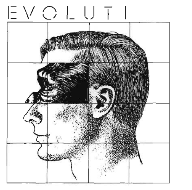Articles/Essays – Volume 08, No. 3
The Structure of Genesis, Chapter 1
The first chapter of the first book of the Bible is probably one of the most influential, derided, pervasive, debated, and misunderstood religious texts in our culture. Some light may be shed on its significance by analyzing it according to the system of Professor Claude Levi-Strauss.[1]
I shall not employ the usual procedure of assuming the paramount importance of the six “days” of creation. Instead, as significant units of analysis I shall use nine of the eleven “speeches” (Si to So) in the chapter. These are the passages preceded or “punctuated” by the words “and God said” (wayomer Elohim), or “and the Gods said” {wayomru Elohim), presupposing a slightly different set of vowel points. “God blessed them, saying” is used after Sy (Genesis 1:22).
“When God set about to create the heavens and the earth,” the earth was tohu wa-bohu, that is, it was all undifferentiated, unformed and void.[2] To introduce order into this chaos it was necessary to produce several sets of binary oppositions, clearly dividing that which was mingled:
S1: light/dark
S2: below/above
S3: wet/dry
S4: cereal/fruit
S5: sun/moon
S6: fish/birds
S7: fish/birds
S8: cattle/creepers
S9: male/female
There seems to be a correlation between S1 to S4 on the one hand, and S5 to S8 on the other, producing something like the following:
| A | B |
| light: dark :: | sun: moon |
| below: above :: | firsh: birds |
| wet: dry :: | fish: birds |
| cereal: fruit :: | cattle: creepers |
With S9, Man is organized and given dominion over both cereal and fruit, birds, and fish, cattle and creepers.
This solves some contradictions, while at the same time creating a new binarism, for over half of the elements man is not given dominion:
| S1 | S5 |
| S2 | S6 |
| S3 | S7 |
| S4 | S8 |
Taking a look at columns A and B it seems that the first of these includes ecological habitats, while the second refers to biological entities. The author of Genesis has an apparent indifference towards both astronomy and astrology. His concern is with oikos, “home,” this planet. The sun and the moon are important only in so far as they are a part of the earthly ecology. Of Genesis 1 we might repeat the statement Michael Jackson made about a Maori creation story:
Creation, or genesis, if these words are to be used, should be considered as referring to the emergence and origin of a new order, a new resolution, from the deliberately created disorder at the commencement of the myth.[3]
Also we might borrow his description from the same source of the creation tale as “a dialectic working out of certain oppositions in the ecological sphere.”[4]
If the present structural analysis is correct, we might derive some hypotheses from it: 1) The phrase “the stars also,” which sounds like an afterthought, was probably a later editorial insertion, out of continuity with the rest of the text. 2) Genesis 1 was probably meant originally to be a record of the deliberations of the Council of the Gods “when the Gods set about to create the heaven and the earth.”[5] From this follows that 3) Far from Genesis 1 and the Garden of Eden story being redundant, they are at least two degrees removed from each other, the first being an account of the planning stage before the creation, with the heavenly beings programming binary oppositions (“Let us make man / in our image / after our likeness”); while the second is an account of events after the creation in the limited setting of the Garden of Eden. The subsequent text has Cain sent out “east of Eden” into a world that was already thickly populated (Genesis 4:14, 15, 17). Between the two narratives (Genesis 1, and 4) which are the concern of the Biblical writer and which are closely linked structurally, falls the entire story of the actual formation of the earth, the appearance of life forms, and the development of the human race. Such questions we are left to puzzle out for ourselves.
[1] “The Structural Study of Myth,” Journal of American Folklore, 78 (1955), 428-444; see also Benjamin Urrutia, “Structural Analyses of the Tiv Version of the Hamlet Myth,” American Anthropologist, 74, no. 5 (1972).
[2] Cenesis (Volume I of the Anchor Bible), (New York: Doubleday Anchor, 1964), trans. E. A. Speiser.
[3] “Some Structural Considerations of Maori Myth,” Journal of the Polynesian Society, yy (1968), 154.
[4] Ibid., p. 155.
[5] This translation can be made without deviating from Speiser’s vowel-point arrangement.


 Back to full Issue
Back to full Issue

